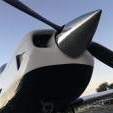-
Members Online
- ed
- mooney_flyer
- RightrudderM20E
- FlyingDude
- takair
- wivika2537
- WS6mro
- jma201
- rrodriguzzi1
- mariosmt
- TheAv8r
- Andy95W
- Hamburglar
- toto
- ElkoRandy20J
- Marc_B
- 0TreeLemur
- kris_adams
- Zippy_Bird
- thomas1142
- Caldwelldr
- Marcopolo
- TerminalSpeed
- Hradec
- Max Clark
- ttflyer
- 00-Negative
- n13951pm
- N201MKTurbo
- LOCOLJ
- NickG
- redbaron1982
- tbone40x
- Jeremy K
- richardbrochu27
- LANCECASPER
- gummirat
- TCC


Recommended Posts
Join the conversation
You can post now and register later. If you have an account, sign in now to post with your account.